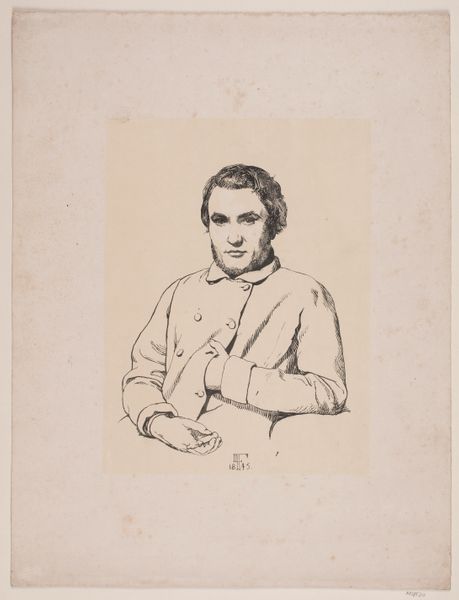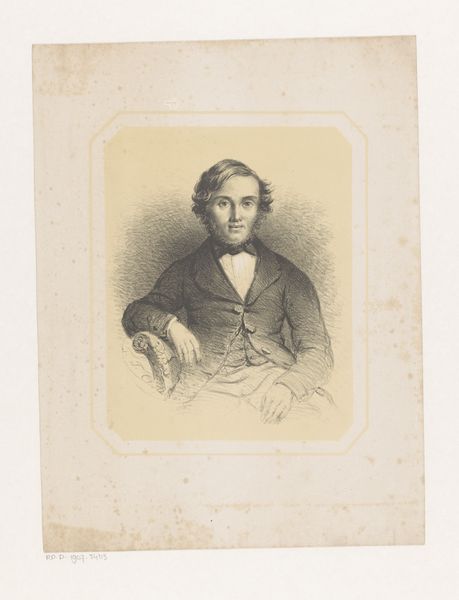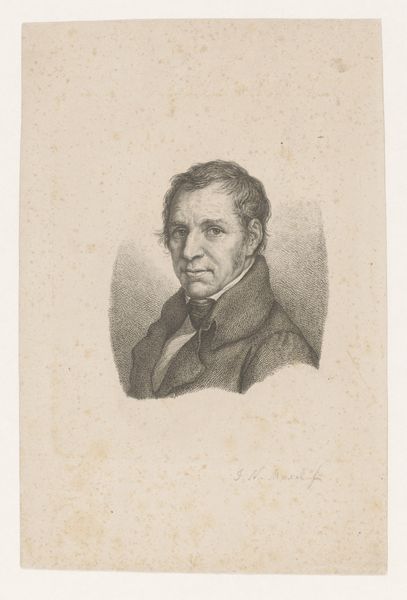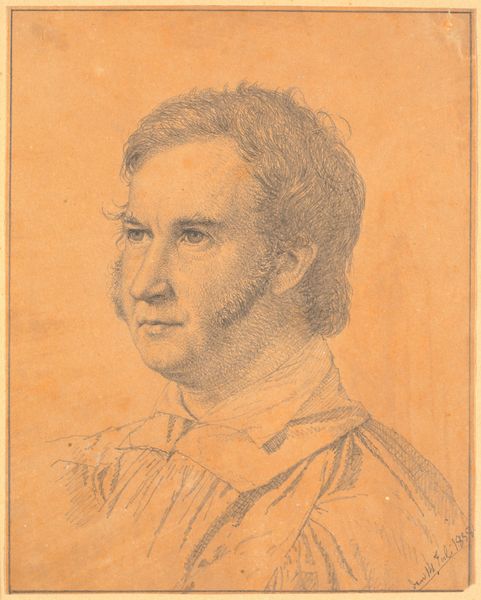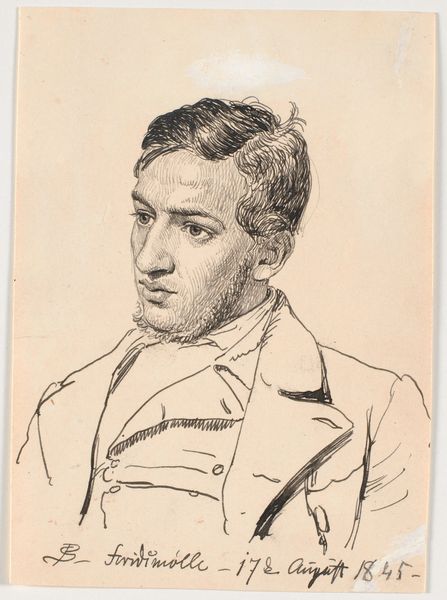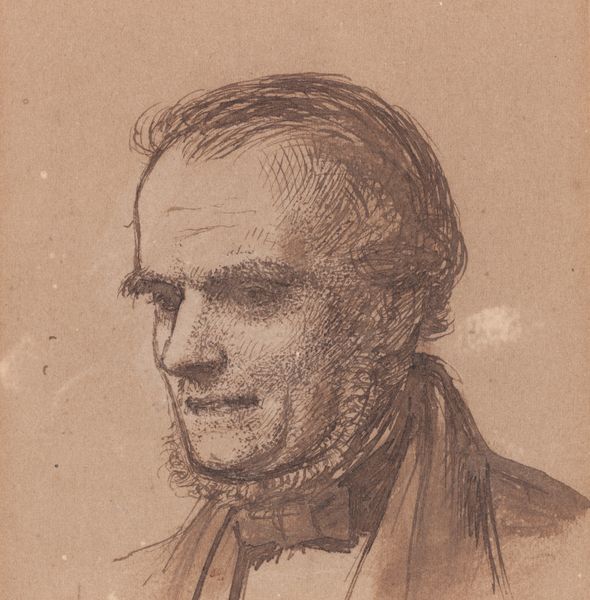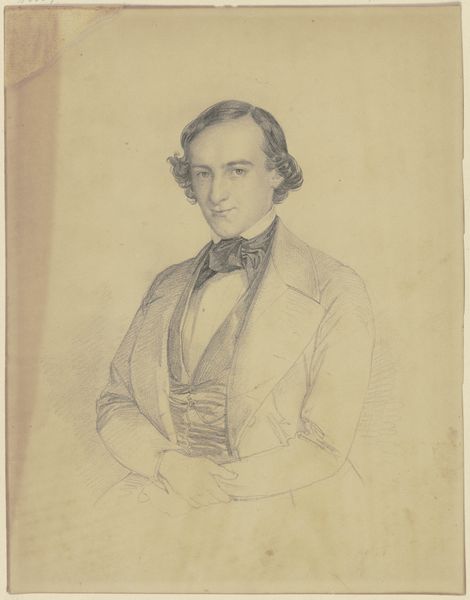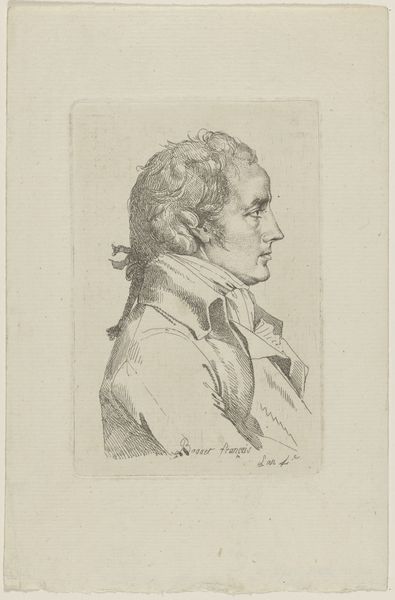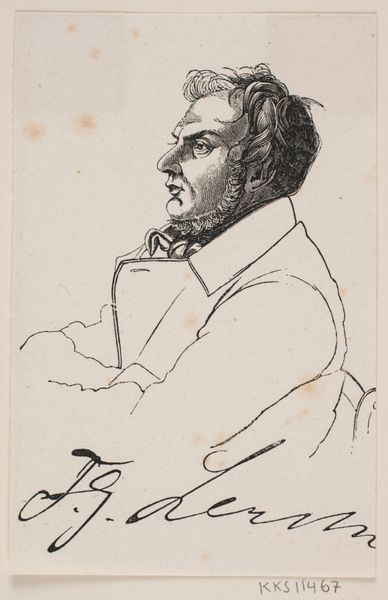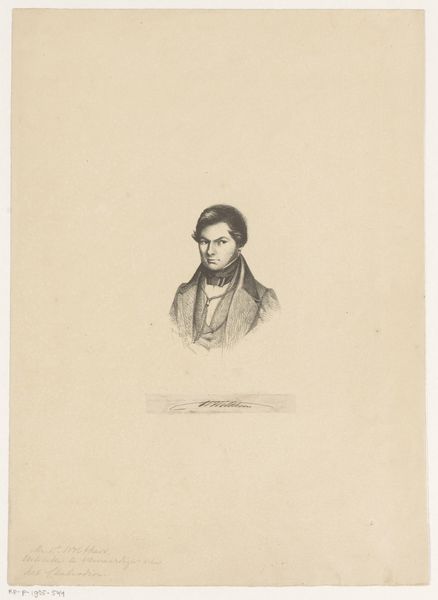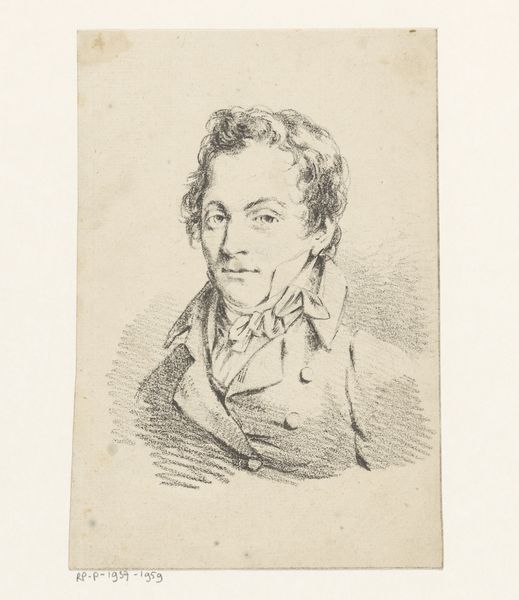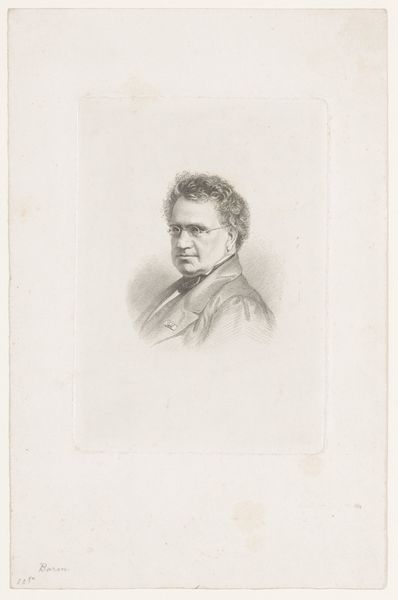
drawing, print, pencil, graphite
#
portrait
#
drawing
#
facial expression drawing
#
light pencil work
#
self-portrait
# print
#
pencil sketch
#
caricature
#
portrait reference
#
pencil drawing
#
pencil
#
line
#
graphite
#
animal drawing portrait
#
portrait drawing
#
pencil work
#
portrait art
Dimensions: 237 mm (height) x 178 mm (width) (bladmaal)
Curator: This is a self-portrait by the Danish Golden Age painter J. Th. Lundbye, created in 1845. It’s a pencil drawing currently housed in the SMK, the National Gallery of Denmark. Editor: Immediately, the weight of that gaze strikes me. He looks both earnest and burdened. Is it the somber lines of the sketch, or does it reflect something deeper about the artist's state? Curator: Let's analyze the formal qualities. Notice the precise lines, especially in rendering his facial features and clothing. The light pencil work and overall composition display a clear, linear approach, consistent with the period’s aesthetic. The emphasis is placed firmly on representational accuracy rather than dramatic chiaroscuro. Editor: True, but even within those formal constraints, consider the social context. Lundbye, a product of his time, portrays himself in a way that reflects the expectations of masculinity. The subtle tension in his hands, clasped tightly together, suggests a hidden emotionality struggling beneath the surface of stoicism. I am intrigued by the expression. Is it vulnerability or defiance? Curator: From a purely visual standpoint, the contrasting textures achieved through different pencil strokes are remarkable. The smooth, almost porcelain quality of his face against the rougher, sketchier rendering of his jacket. I am interested in what this conveys aesthetically. It seems this contrast highlights certain focal points on the body itself. Editor: Perhaps the uneven balance reflects the growing unease in Danish society at that time, the conflict between tradition and modernity. Was Lundbye feeling these shifts personally? His art certainly hints at a wrestling with these broader cultural issues. Curator: Whether intended or not, the subtle asymmetries contribute to the portrait's dynamic nature. This speaks volumes about the artist's skillful manipulation of form. Editor: It reminds us that even a seemingly straightforward self-portrait can be a window into the socio-political realities and the unspoken anxieties of a period. Thank you, Lundbye, for that silent dialogue across the centuries. Curator: Indeed, a piece inviting contemplation.
Comments
No comments
Be the first to comment and join the conversation on the ultimate creative platform.
